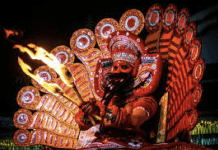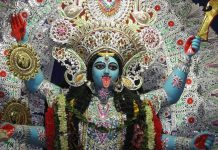Devshayani Ekadashi, also known as Ashadi Ekadashi or Shayani Ekadashi, is a sacred Hindu festival that holds great significance for devotees of Lord Vishnu. Falling on the 11th day of the bright fortnight in the month of Ashadha, this auspicious occasion marks the beginning of the Chaturmas period. Devotees observe this day with fasting, prayers, and rituals to honor Lord Vishnu’s celestial slumber and seek spiritual enlightenment. Let us delve deeper into the significance and customs surrounding Devshayani Ekadashi, a time of divine introspection and awakening.
Significance: Lord Vishnu ‘s Divine Slumber
Devshayani Ekadashi is a significant day in Hinduism. According to beliefs, Lord Vishnu, the preserver of the universe, enters a state of Yogic sleep (Yoga Nidra) for four months, reclining on the serpent deity Shesha in the Ksheer Sagar (ocean of milk). Lord Shiva takes care of the Universe during this time. This period, known as Chaturmas, coincides with the monsoon season, during which certain activities are considered inauspicious.
Those who observe Devshayani Ekadashi are blessed with peace, happiness, and prosperity by Lord Vishnu, and are liberated from the cycle of birth and death. The day is considered auspicious for Bhajan, Kirtan, and Katha. Lord Vishnu, Goddess Lakshmi, and Goddess Tulsi are worshipped on this day.
Observances and Customs:
Devotees eagerly await Devshayani Ekadashi as it offers a precious opportunity for spiritual growth and cleansing of sins. Devotees of Lord Vishnu observe Devshayani Ekadashi with utmost devotion and follow a set of rituals to seek his blessings. Here is a step-by-step guide to observing this sacred day:
- Rise early on the day of Ekadashi, preferably during Brahma Muhurat, which is two hours before sunrise. This time is considered auspicious for spiritual practices.
- Begin the day by taking a purifying bath and wearing fresh clothes. This physical cleansing symbolizes the purification of the mind and body.
- Engage in Dhyana, or meditation, to calm the mind and connect with the divine. During this practice, devotees focus their thoughts on Lord Vishnu and seek his presence within themselves.
- Take a Sankalpa, a solemn pledge, to sincerely observe the vrat (fast) of Devshayani Ekadashi. This commitment signifies one’s dedication to the spiritual path and adherence to the prescribed rituals.
- Maintain celibacy throughout the day of the vrat. It is important to note that the fasting traditionally begins on Dashami Tithi (the tenth day) evening.
- Throughout the day, devotees engage in heartfelt prayers, seeking Lord Vishnu’s blessings and guidance on their spiritual journey. They recite sacred mantras such as ‘OM Namo Bhagavate Vasudevaya’ to invoke his divine presence.
- Many devotees observe a rigorous fast, abstaining from consuming grains and other specific food items. This act of self-discipline demonstrates their devotion and commitment to Lord Vishnu.
- Devotees immerse themselves in devotional activities such as reciting prayers, singing hymns, and reading sacred scriptures that glorify Lord Vishnu. These practices deepen the spiritual connection and foster a sense of devotion and reverence.
- Some devotees engage in prolonged meditation sessions to enhance their connection with the divine. Through focused meditation, they seek a deeper understanding of Lord Vishnu’s teachings and his presence within themselves.
- Temples dedicated to Lord Vishnu are adorned with vibrant decorations on Devshayani Ekadashi. Devotees visit these temples to offer their prayers, seek solace in the divine atmosphere, and participate in collective worship ceremonies.
Observing Devshayani Ekadashi with sincerity and devotion allows devotees to experience spiritual growth, purification, and a deeper connection with Lord Vishnu. By following these rituals and immersing themselves in prayer and meditation, devotees seek his blessings and guidance on their spiritual journey.



























































